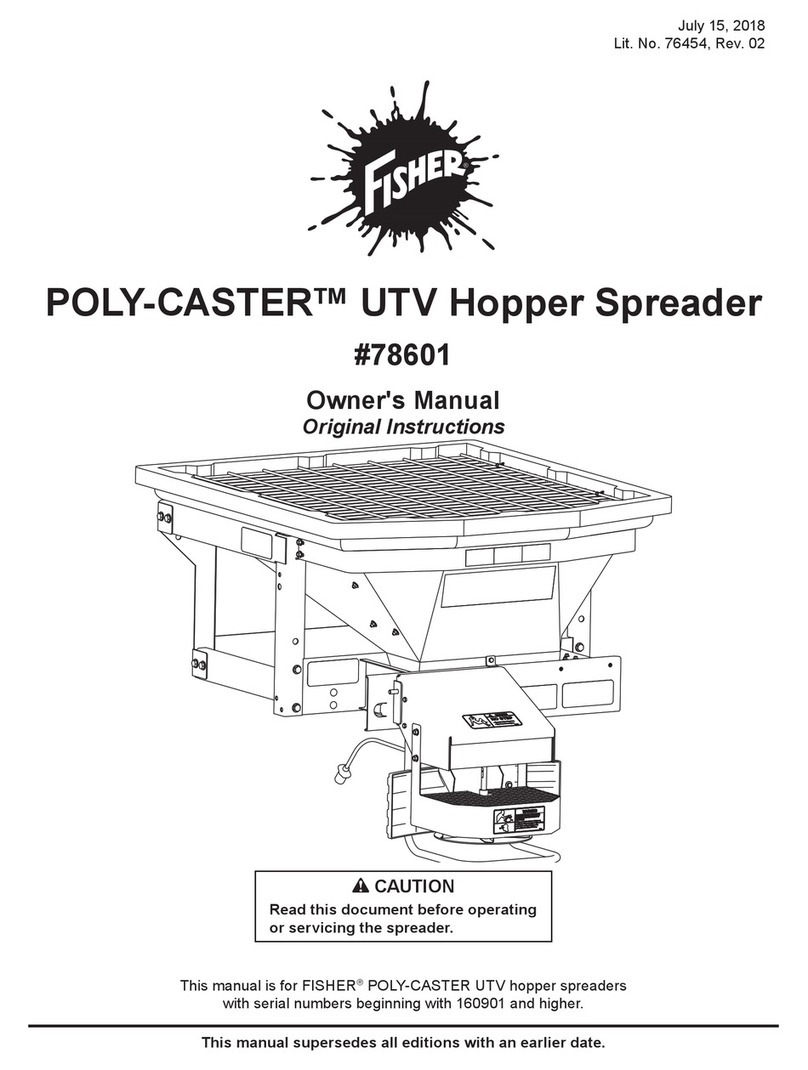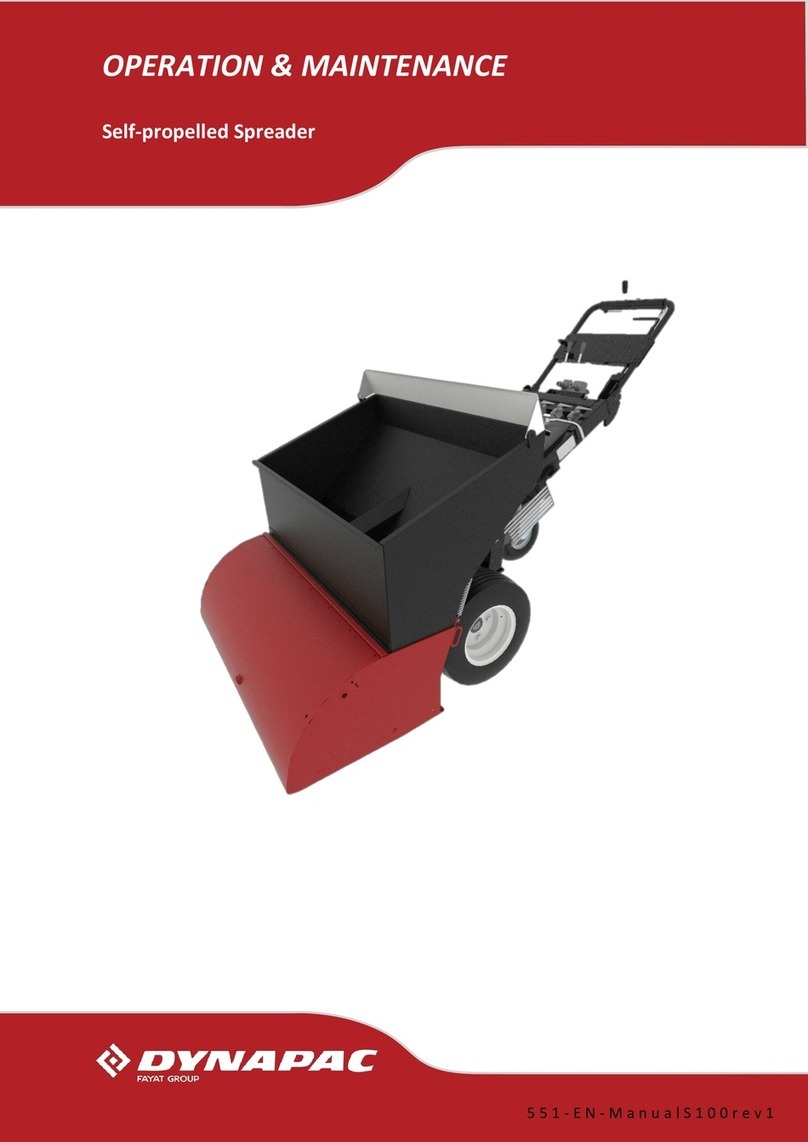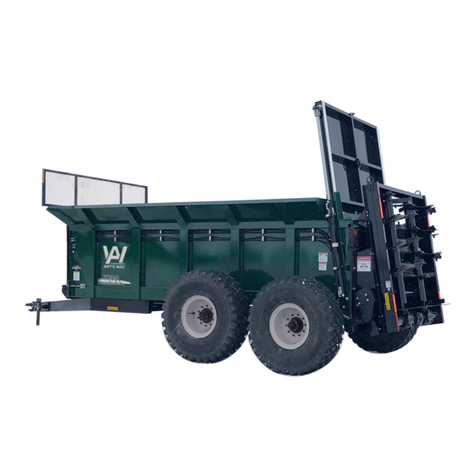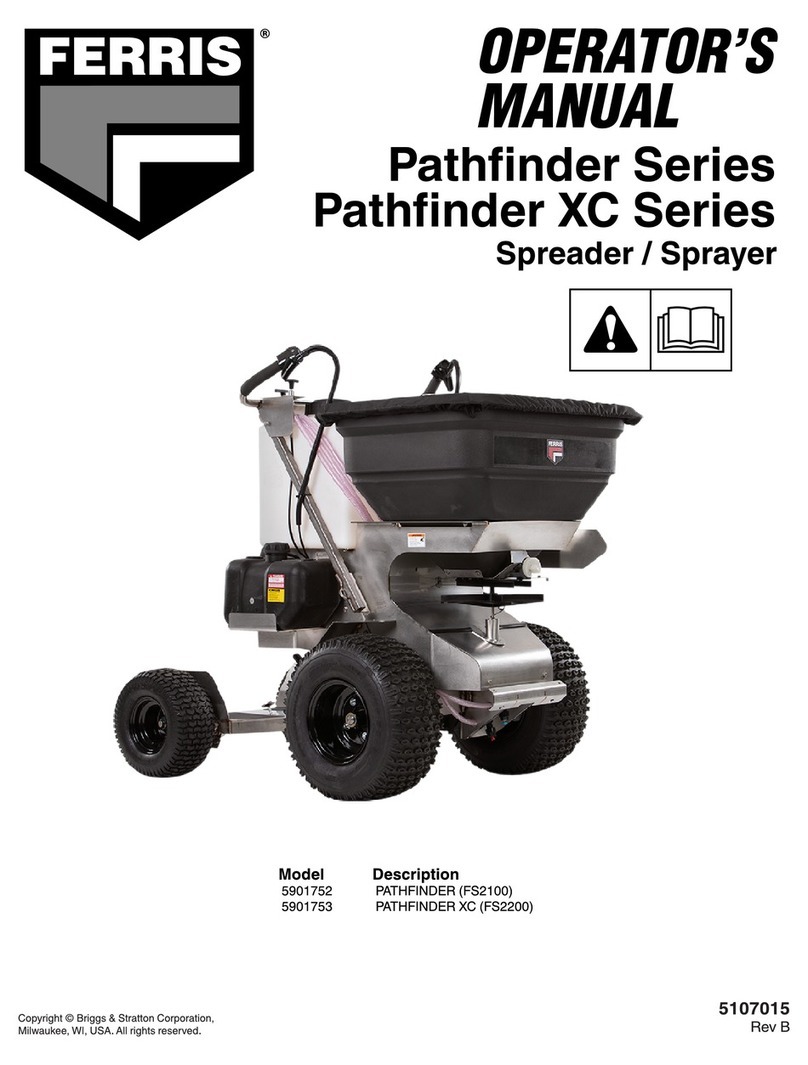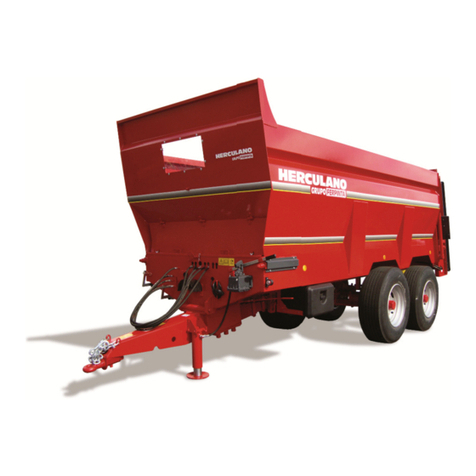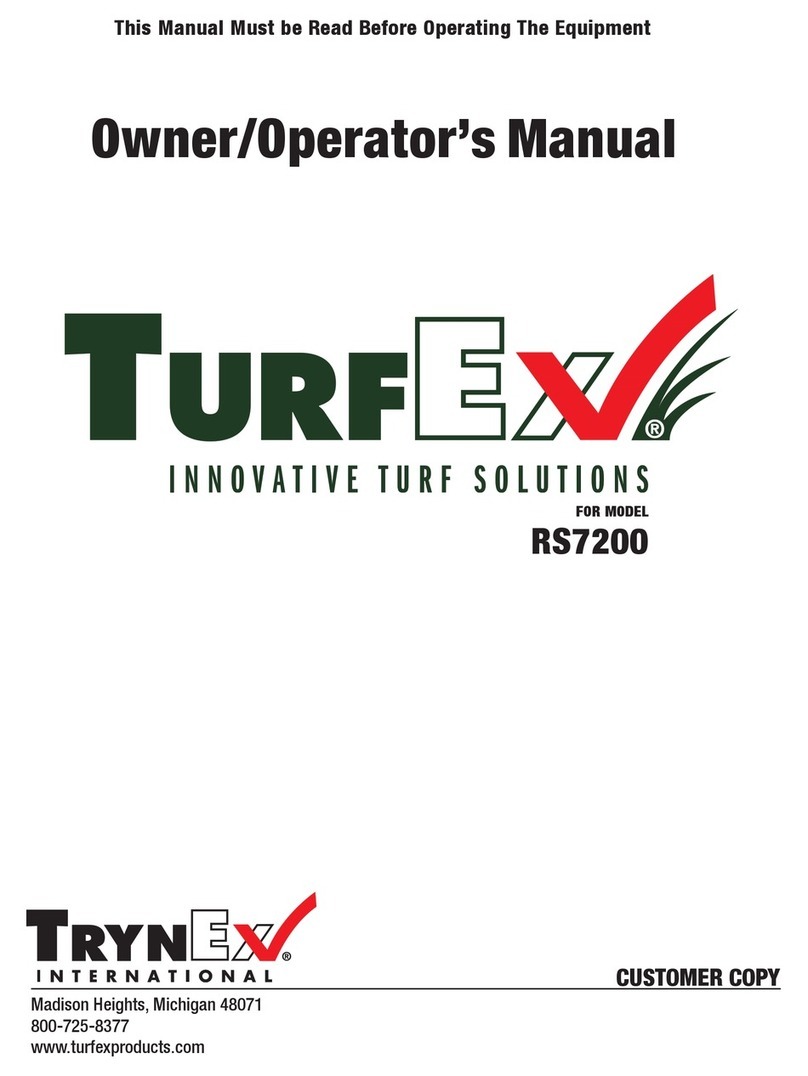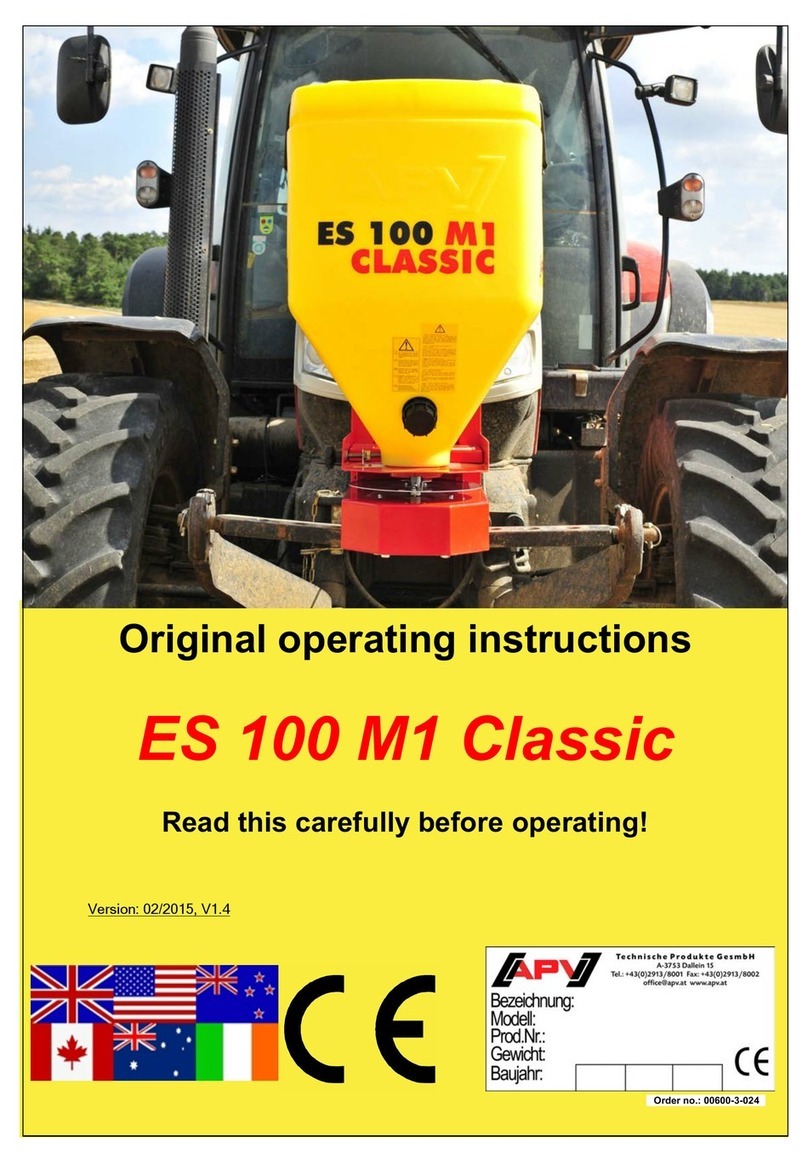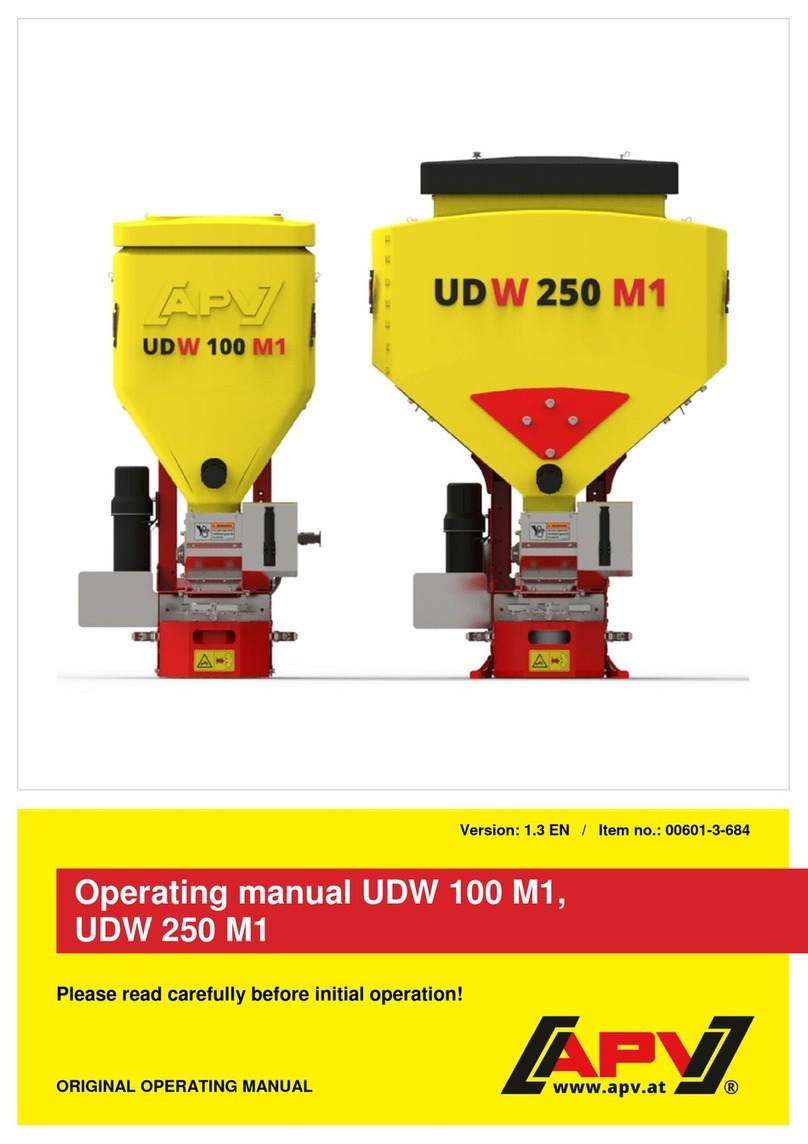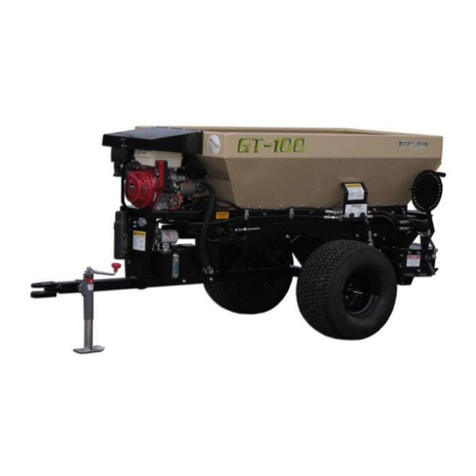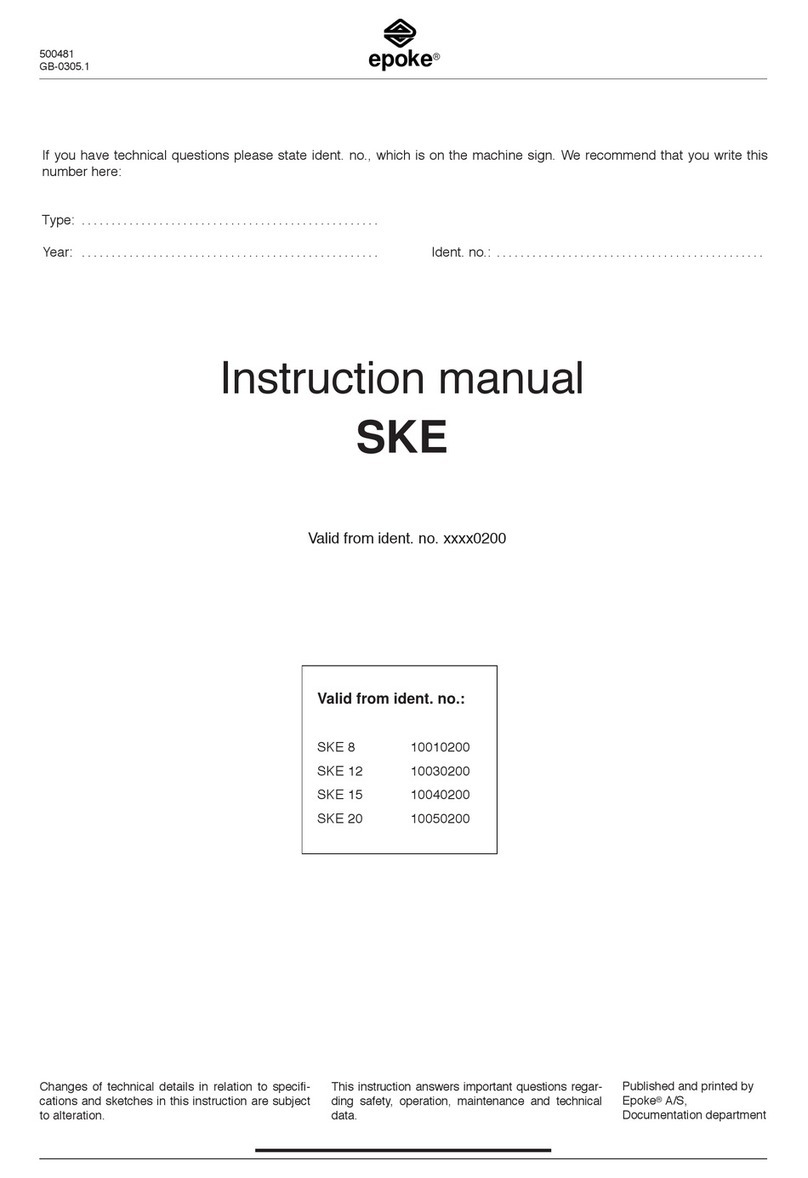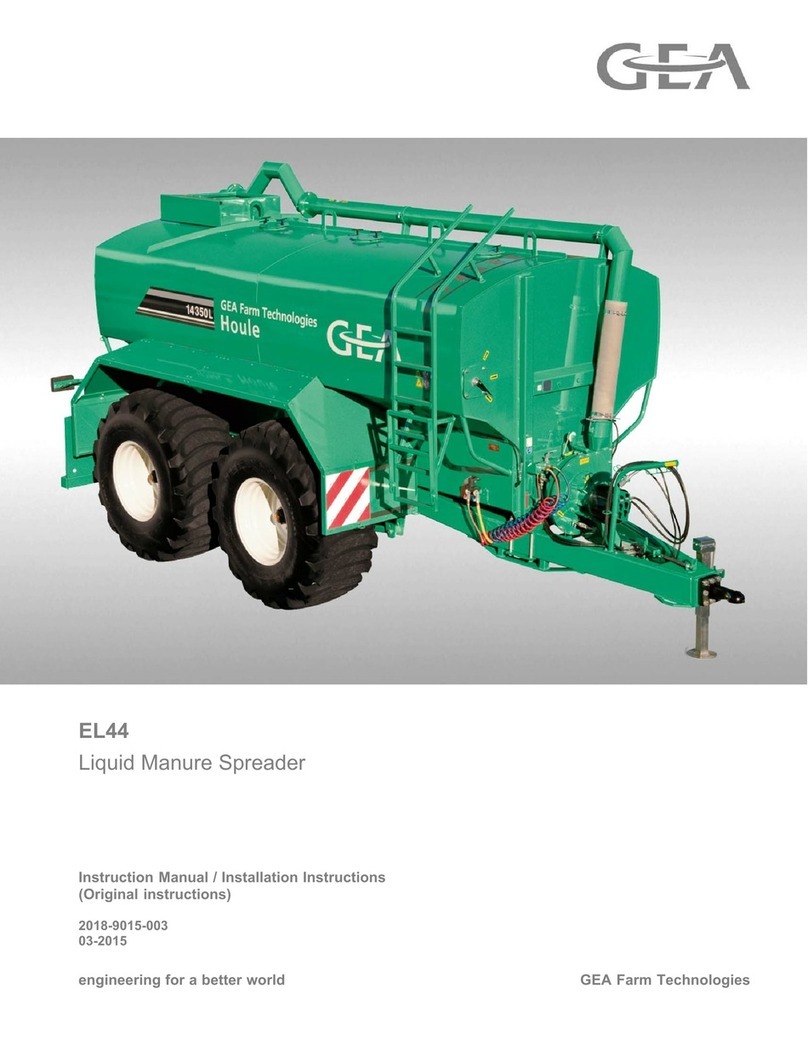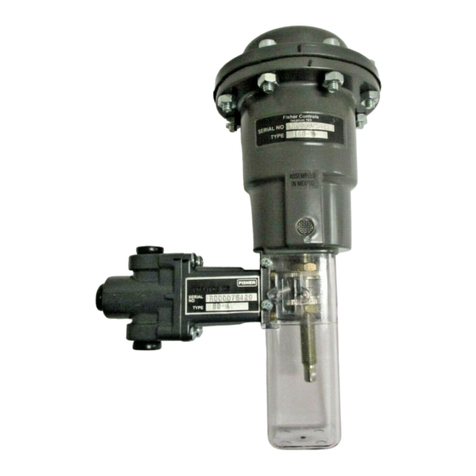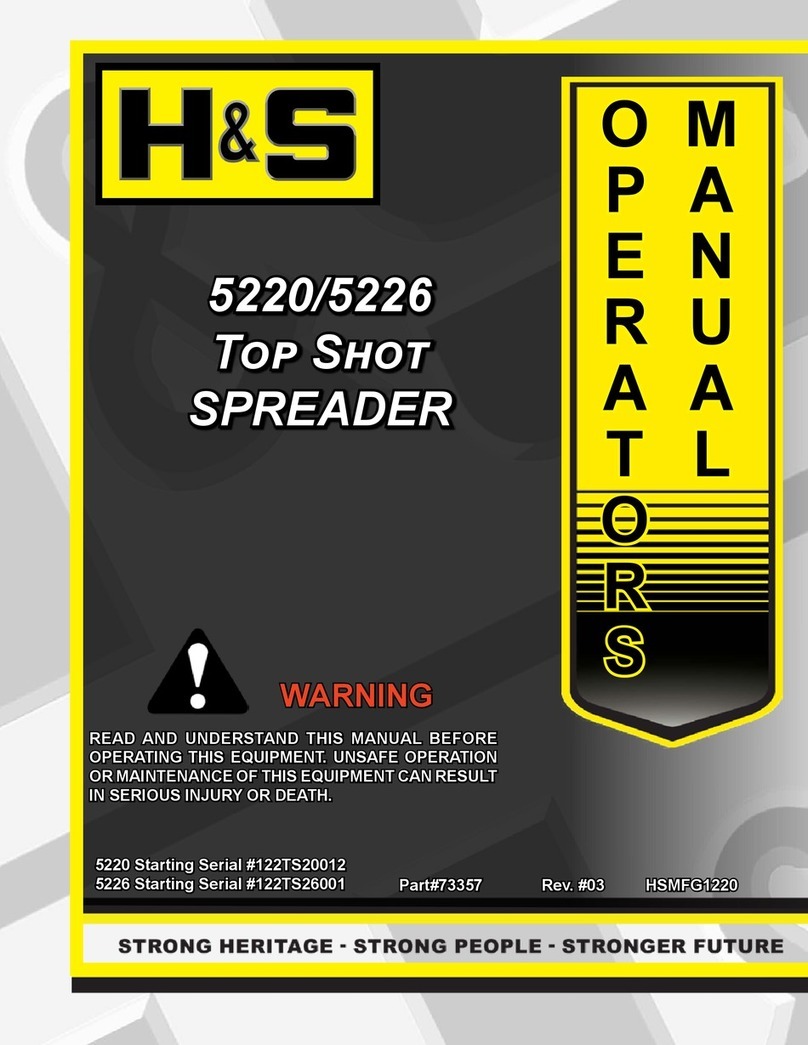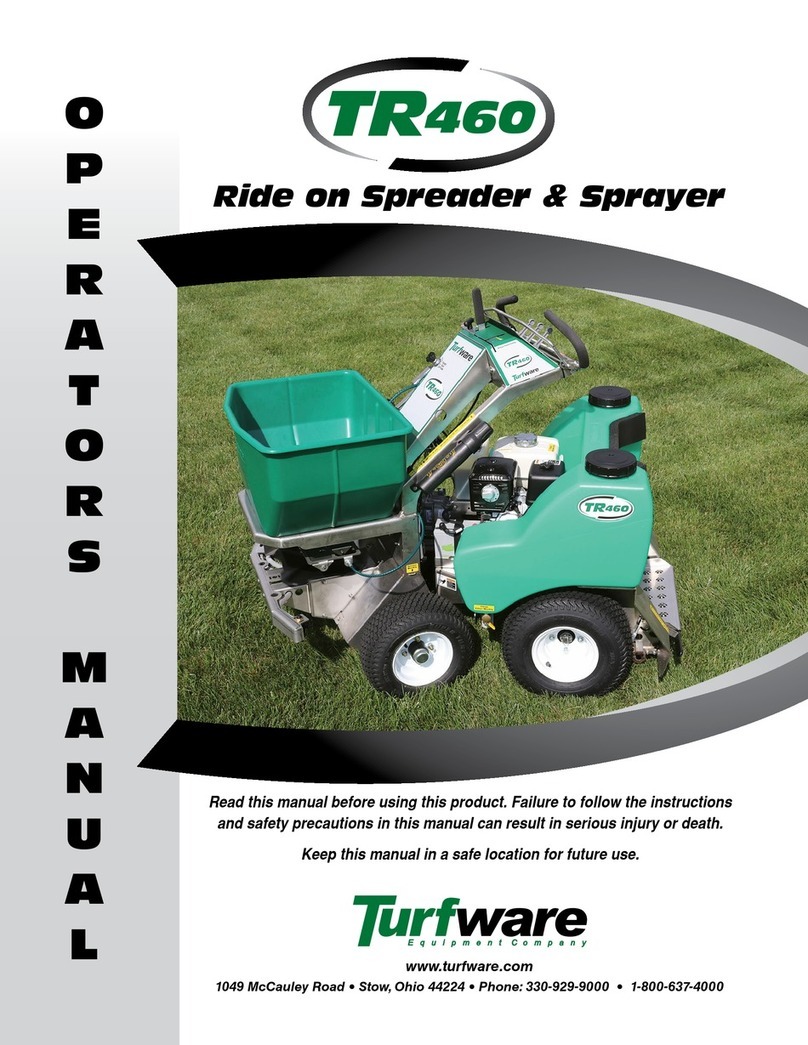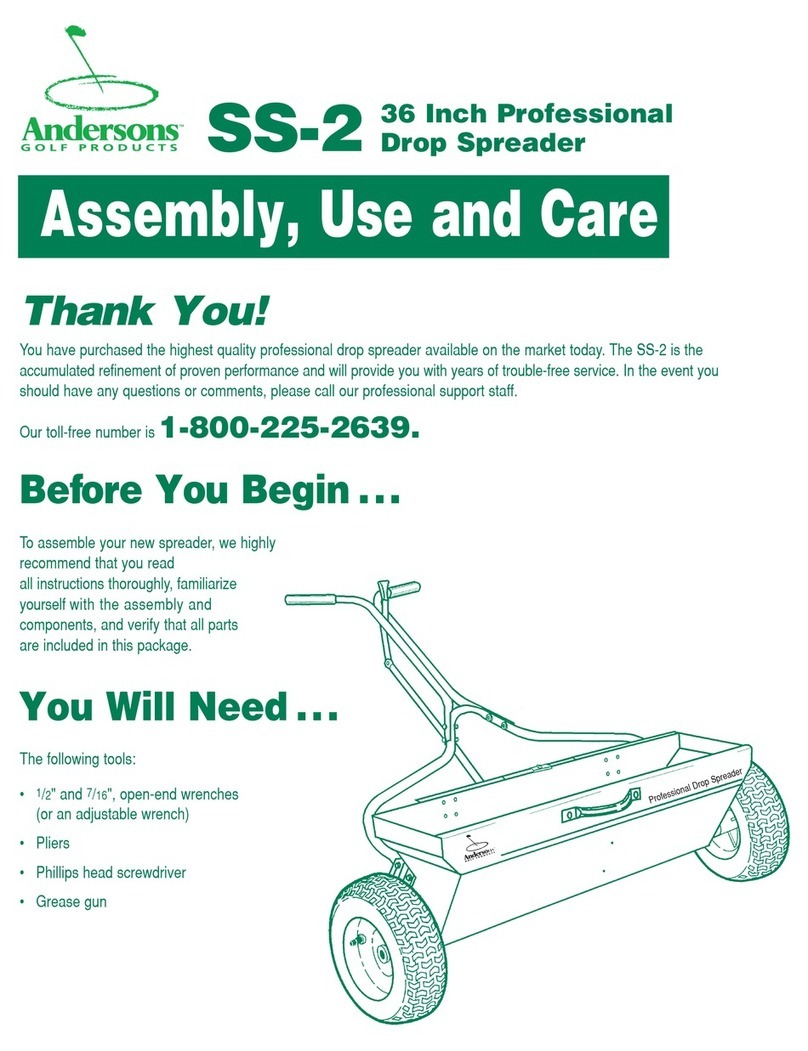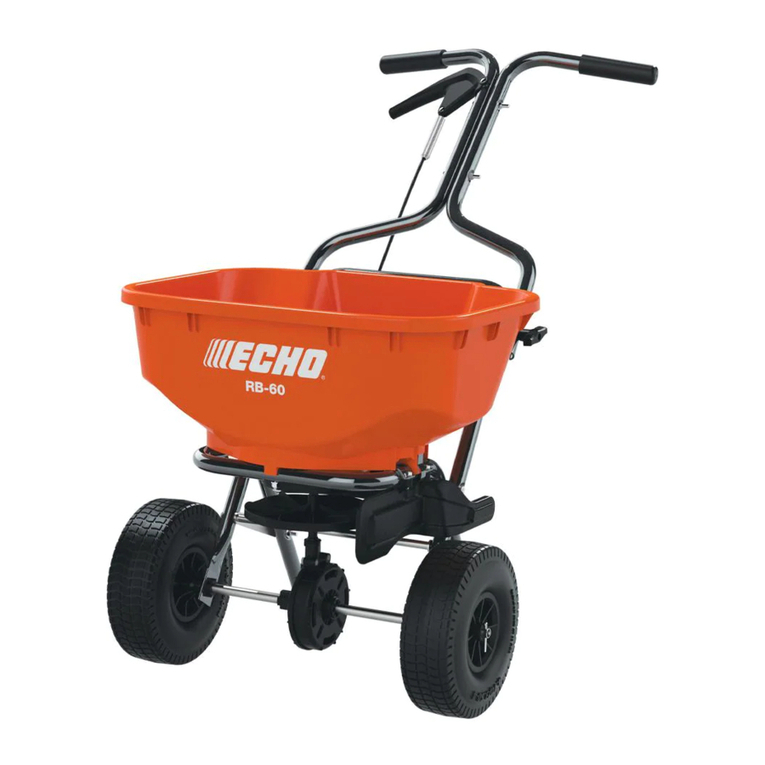
Page 2
Table of contents
EC Declaration of Conformity...................................................................................................... 3
1 Provisions............................................................................................................................ 4
2 Warranty............................................................................................................................... 4
3 Accident prevention safety instructions............................................................................ 4
4 Mounting of the spreader ................................................................................................... 5
Layout and mode of operation.................................................................................... 5
Mounting the implement............................................................................................. 5
Mounting the control box............................................................................................ 6
5 Settings and operation........................................................................................................ 7
Spreading width ......................................................................................................... 7
Setting charts............................................................................................................. 8
Spreading disc, throwing vanes, point of impact adjustment ...................................... 9
Deflector (guide plate).............................................................................................. 10
Dismounting the seeding shaft................................................................................. 10
Agitator .................................................................................................................... 11
Calibration test / Regulation of the seed rate............................................................ 12
Operation on the road .............................................................................................. 13
Emptying the hopper................................................................................................ 14
6 Cleaning, care, maintenance, and repairs ....................................................................... 14
General information ................................................................................................. 14
Location of the rating plate....................................................................................... 15
Cleaning the spreader.............................................................................................. 15
Repairs and service ................................................................................................. 15
7 Decommissioning, storage and disposal ........................................................................ 16
Decommissioning the implement ............................................................................. 16
Storage of the implement ......................................................................................... 16
Disposal................................................................................................................... 16
8 Technical data ................................................................................................................... 17
9 Accessories ....................................................................................................................... 18
10 Connection diagram.......................................................................................................... 20
11 My idea............................................................................................................................... 21
12 Safety instructions ............................................................................................................ 22
Intended use ............................................................................................................ 22
General safety-related instructions and accident prevention regulations .................. 22
Mounted implements................................................................................................ 24
Maintenance ............................................................................................................ 25
13 Safety signs ....................................................................................................................... 26
